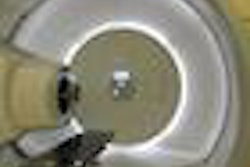Proposed new Medicare payment rates for 2014 were released on July 8 by the U.S. Centers for Medicare and Medicaid Services (CMS), and they're a mixed bag for providers of imaging services. The agency has continued to cut reimbursement for most imaging procedures, but at a lower rate than in the past.
The Medicare Physician Fee Schedule (MPFS) proposed rule for 2014 has no new additions to the agency's multiple procedure payment reduction (MPPR) policies beyond what's in existing legislation. But other policies -- such as changes to the Hospital Outpatient Prospective Payment System (HOPPS) cost-to-charge ratio methodology -- could have a devastating effect on payments next year.
Specialty cuts
Under the proposed MPFS rule, cuts to imaging specialties would be somewhat lessened compared to 2013. Radiation therapy centers would take the biggest hit of all medical specialties, with payment cuts of 13%. Radiation oncology services would be cut by 5%.
Other imaging-related specialties would also feel the pain, but at lower percentages: In fact, nuclear medicine would see a 1% raise, compared with last year's 3% cut, while radiology's cuts would go from 3% in 2013 to 1% in 2014.
| CMS 2014 MPFS payment changes by medical service | |||||
| Specialty | Total 2013 (November 2012*) | Total 2014 | |||
| Diagnostic testing facility | -7% | -7% | |||
| Interventional radiology | -3% | -4% | |||
| Nuclear medicine | -3% | +1% | |||
| Portable x-ray | +5% | -1% | |||
| Radiation oncology | -7% | -5% | |||
| Radiation therapy centers | -9% | -13% | |||
| Radiology | -3% | -1% | |||
The proposed MPFS cuts do not take into account whether Congress can fix the flawed sustainable growth rate (SGR) formula, according to CMS. The agency is now projecting a 24.4% reduction due to the SGR in 2014.
"While the Congress has provided temporary relief from negative updates for every year since 2003, a long-term solution is critical," CMS wrote. "We are committed to working with the Congress to reform Medicare physician payments to provide predictable payments that incentivize quality and efficiency in a fiscally responsible way."
The proposed rule also boosts the equipment utilization rate from 75% to 90% for imaging equipment priced at more than $1 million, according to a mandate stipulated in the American Taxpayer Relief Act of 2012.
"We are applying the 90% utilization rate assumption in 2014 to all of the services to which the 75% equipment utilization rate assumption applied in 2013," CMS wrote.
No MPPR changes
There are no new MPPR policies in this proposed 2014 rule, but that doesn't mean there won't be in the future, CMS said.
"Although we are not proposing any new MPPR policies for 2014, we continue to look at expanding the MPPR based on efficiencies when multiple procedures are furnished together," the agency said.
The 2013 MPFS rule established a 25% MPPR cut in Medicare's professional component for CT, MR, and ultrasound services performed by the same physician on the same patient in the same session. CMS applied this MPPR to subsequent procedures performed by other physicians on the same patient in the same session, as well as to other specialties, such as cardiology and ophthalmology.
"It's good news that CMS is not expanding the MPPR to all imaging," Cynthia Moran, assistant executive director for government relations at the American College of Radiology (ACR), told AuntMinnie.com. "But it does underscore the inconsistency of CMS' philosophy, showing that they went out of their way to single out advanced diagnostic imaging in past years with no data to support that policy."
Special HOPPS?
Also on July 8, CMS issued a proposed rule for the 2014 Hospital Outpatient Prospective Payment System. One significant change in this rule is that beginning in 2014, CMS would calculate the HOPPS relative payment weights using distinct cost-to-charge ratios for cardiac catheterization, CT scans, and MRI studies, CMS wrote.
A change to the cost-to-charge ratio accounting methodology would be dangerous, according to Moran: If implemented, it will eventually slash payments for imaging provided in offices, due to the Deficit Reduction Act's mandate that the technical component for CT, MRI, and nuclear medicine be the lowest of either the hospital outpatient or office setting.
"This methodology is coming from CMS' inpatient rule, and it's an anomaly," she said. "We've showed CMS how this methodology is wrong and that as a result, for example, a CT and an x-ray would be paid the same amount, even though the costs are enormously different. If CMS uses this methodology, the cost compression that results will significantly reduce the technical component in the office setting, because of the DRA."
CMS is accepting comments on both the HOPPS and MPFS proposed rules until September 6; the final rule will be issued by November 1, the agency said.



















